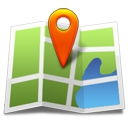
I haven’t every stopped
geotagging, just maybe I haven’t been talking about it much here. Ok, there was a little while back in Europe last year where I got slightly discouraged. I had been using
Geotag Photos and loved it but one day java automatically updated itself on my PC and next one of the scripts for geotag photos promptly stopped working. The error message looked simple enough, it was trying to load a file from a location that didn’t exist. However, when you are travelling you don’t have time or energy left to ponder such bugs. So I keep collection my GPS tracks and photos, figuring I could post process the location later (as opposed to each night. Somewhere In Germany

I discovered
GeoSetter and downloaded it and wow what great features it offered. Now the interesting part of the story. My mobile phone, which houses the GPS automatically adjusts itself for the local time zone and if you are wandering around near Salzburg, sometimes the roaming on your foriegn phone finds a French telco and sometimes a German telco and for some very strange reason the German times were an hour ahead (no that wasn’t supposed to happen, it was some sort of
roaming telco glitch). The result was a lot of my post processed photos where geotagged at the wrong location. I just lost patients before I

found the time shift in my GPS tracks (months later). In actual fact that isn’t a problem with geosetter as there is a nice time change feature (providing you realize the time shift) which can be applied at the time you processing the data. It also maps out your route and photo locations on a google maps, providing you have internet access. Which is a great way to check your geotagging. A little later on in the Netherlands I found google code’s
gpicsync, which is a bit clunky and old fashion (ie the user interface is very plain, but it works) and used it and the
picasa/google earth approach whenever I had web access for the rest of that trip. I definitely now prefer
GeoSetter.

The other problem I had at the time was my phone’s
GPS was not always working, basically the narrow street in old medieval towns effectively hid some of the satellites which should have been visible, but where hidden from my phone at street level. Worse still
My Tracks, my personal favourite GPS tracking tools, just didn’t bother to record the point when there were not enough satellites found. Not only that the phone spent a lot of time looking and would quickly drained the battery. Again I only found this out after the trip. However at the time I did find
GPSTrac (beta), a nice simple GPS app that promised to save battery life and basically it does report all it readings albeit with an error flag if only a few satellites are found. I now always run both My Tracks and GPSTrac and I suspect the fact that GPSTrac is running keeps My Tracks functioning better and less power hungry or is it we don’t have narrow medieval lanes between buildings here in the bush in Australia. There are dozens of alternative GPS tracking apps around, so I suggest you look for yourself and test out their suitability to your area.

When I tried to photograph the key events in the
recent Transit of Venus I did carefully calibrate the time on two laptop computers, my phone and two cameras the night before but late the next day I checked again and to my dismay there was up to a 4 second difference across all of them. This is fine for geotagging I can't even run fast enough for that to make more than a couple of meters difference over that time interval.. However if I was trying to get precise measurement so I could
work out the distance to Venus and the Sun I would have a few errors in my calculations. That’s academic because cloud cover meant I missed all the key events. The “problem” was that there can be non linear drift in your computer clock, and I haven’t yet found an explanation I believe, There are now no less than 7 million accurate atomic clocks on-line and there are also plenty of software to calibrate your computer and phone, but I haven't bothered trying them (yet!). What I have discovered is a great little site called
TIME.is it give you a nice bold accurate digital clock and estimated the drift in time currently on your computer. The big bold numbers make synchronizing your camera and phone, within a second, nice and easy. I’ll leave sorting out the drift in the clocks and sub second calibration to you to figure out.
No comments:
Post a Comment